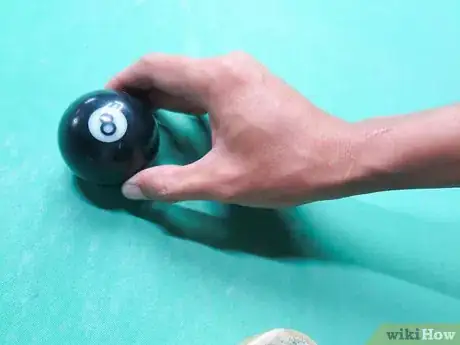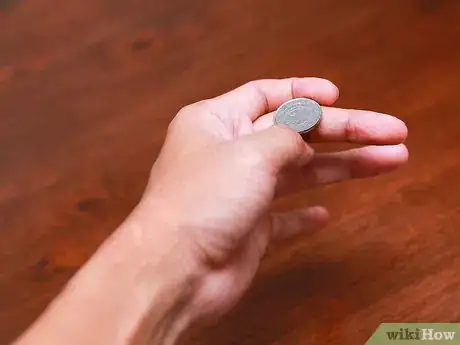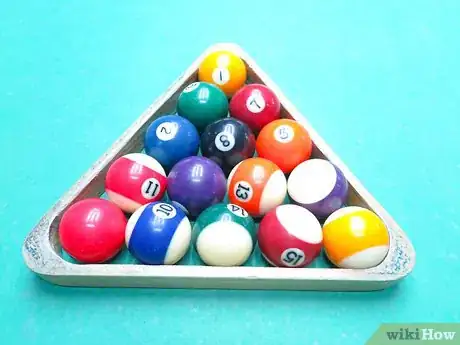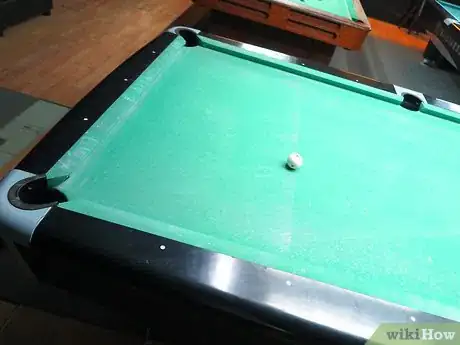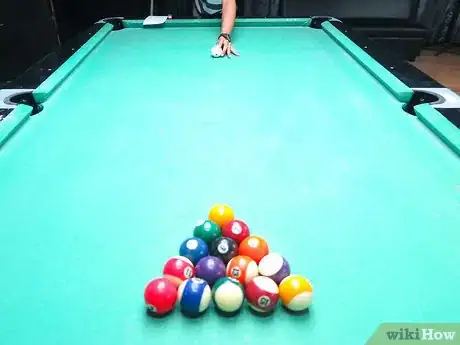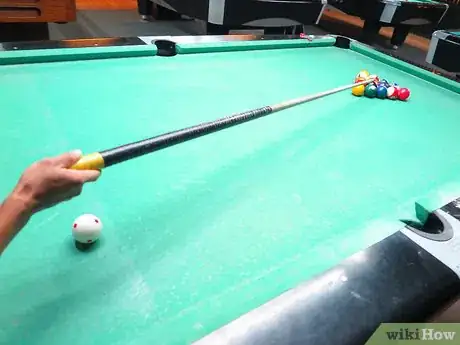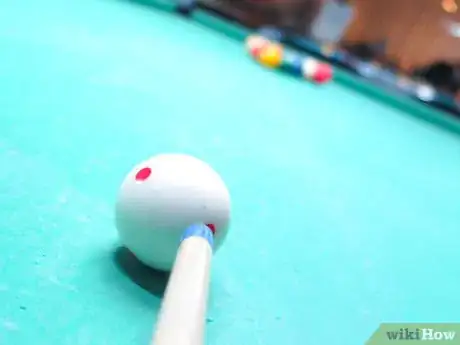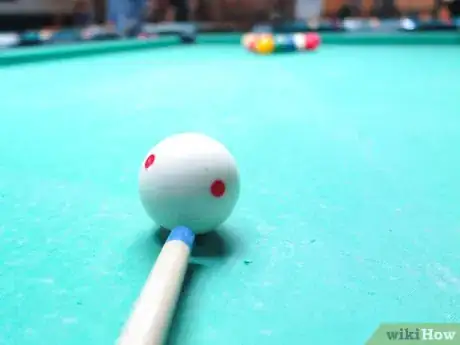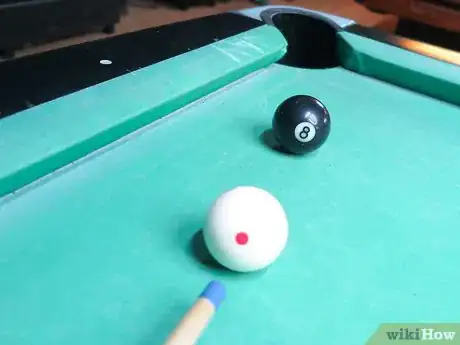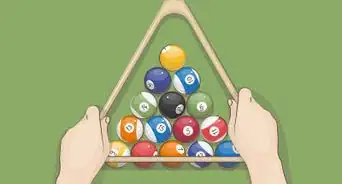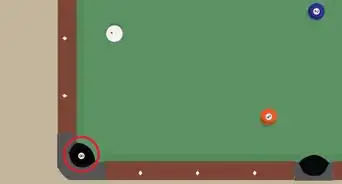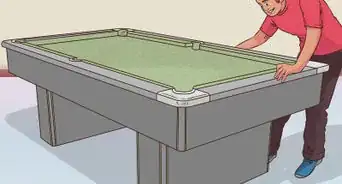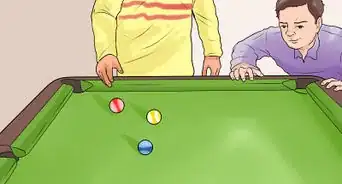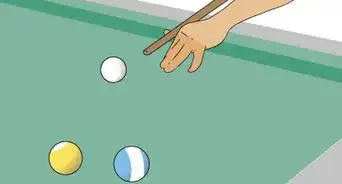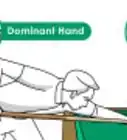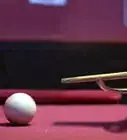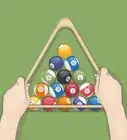wikiHow is a “wiki,” similar to Wikipedia, which means that many of our articles are co-written by multiple authors. To create this article, 10 people, some anonymous, worked to edit and improve it over time.
wikiHow marks an article as reader-approved once it receives enough positive feedback. In this case, 83% of readers who voted found the article helpful, earning it our reader-approved status.
This article has been viewed 160,877 times.
Learn more...
Sinking the 8-ball on the break requires a skilled, practiced shot. The breaker--the player that "breaks" the rack, or triangular formation of pool balls, with the white cue ball--aims to knock the 8-ball into a pocket on the opening shot. In some variations of pool, sinking the 8-ball on the break can lead you to an automatic victory over your opponent but be careful not to scratch, or pocket the cue ball!
Steps
Preparing for the Game or Shot
-
1Determine the rules of the game. If you are playing against an opponent, agree upon a set of rules before racking the balls. In many versions of the game, pocketing the 8-ball on the break guarantees the breaker an automatic victory. However, if you pocket the 8-ball on the break and scratch the cue ball, you will automatically forfeit the game to your opponent.[1]
-
2Decide which player will go first. Determine if you or your opponent will be the breaker. If you have trouble deciding, flip a coin or play [Play Rock, Paper, Scissors|Rock, Paper, Scissors.Advertisement
-
3Rack the balls. Place the rack on the table, situating the rack’s apex on the foot spot, and position the balls correctly inside the triangle. For a standard game of eight-ball pool, the 1-ball is placed at the rack’s apex and the 8-ball is located in the center of the triangle. One bottom corner must contain a solid and the other corner must contain a stripe—the numbers on these two balls do not matter. All other balls are randomly placed within the rack.
- Make sure the rack is tight--the balls should be close together.
Placing the Cue Ball
-
1Determine if you will break from the right or the left side. If you are right-handed, you may want to try breaking from the left side of the table. If you are left-handed you may want to try breaking from the right side of the table.[2]
- Try shooting from both sides of the table to figure out what is the most comfortable option for you.
-
2Locate the head string. The head string is a line that goes across the table, from side rail to side rail. The line connects the second diamonds on the head end and passes through the head spot, a point equidistant from both side rails.[3]
- Pool tables have four rails, or sides: a head rail, a foot rail, and two side rails.
- Pool tables are have two ends, the head end and the foot end.
- Pool tables have three strings, or imaginary lines: the head string, the center string, and the foot string. These lines are never drawn on the table.
- The head string is nearest the head rail. The area between the head rail and the head string is called the Kitchen. On the break, the cue ball may be placed anywhere within the kitchen or along the head string.
- The center string connects the pockets on the side rails.
- The foot string falls between the second diamond on the foot end. The foot string passes through the foot spot, a point that falls equidistant between the two side rails. The apex of the rack is placed on the foot string.
- Each end has three diamonds.
-
3Place the cue ball. The cue ball’s exact placement depends upon the length of the table. If these placements aren’t working for you, try moving the cue ball along the side rail or towards the center of the table. Remember, the placement of the cue ball isn’t wrong if it works for you.
- For a nine foot table, place the cue ball one ball’s width away from the side rail you will be breaking from and three ball’s width from the head string (into the kitchen).
- For an eight foot table, place the cue ball one ball’s width away from the side rail you will be breaking from and two and one half ball’s width from the head string (into the kitchen).
- For a seven foot table, place the cue ball one ball’s width away from the side rail you will be breaking from and two ball’s width from the head string (into the kitchen.[4]
Sinking the 8-Ball on the Break
-
1Aim for the second ball on either side of the head ball. Position your body, arms, and cue stick in line with the second ball on either side of the head ball. If you are breaking from the right, you will try to hit the second ball to the right of the head ball. If you are breaking from the left, you will try to hit the second ball to the left of the head ball.
-
2Apply english, or sidespin. To sink the eight ball on the break, you need to apply english, or sidespin, to the cue ball. This is an advanced technique that affects the curve and throw of the cue ball. Imagine a clock face on the side of the cue ball facing you. If you are breaking from the right rail, use low left english—hit the cue ball at approximately 7:00. If you are breaking from the left rail use low right english—hit the cue ball at approximately 5:00.
- Mastering english requires a lot of practice. It is important to be patient while you work on developing this skill.
- Some experts recommend hitting the cue ball at 6:00, while others suggest hitting the cue ball at 6:30 or 5:30.
- Avoid hitting the head ball—it will cause the 8-ball to go in the wrong direction.
-
3Hit the cue ball with a draw stroke. The draw shot is ideal when applying lower right or left english. This stroke causes the cue ball to reverse its path back towards you after it hits a pool ball—in your case the second ball to the right or the left of the head ball. Keep your cue level, your grip loose, and follow through with the tip of the cue down. The amount of force required will vary from person to person. While professional players break at about 36 mph (58 km/h), it is possible to make the shot by breaking at half the speed. Experiment with different amounts of force and remember that what works for you may not work for other people.
- This is an advanced stroke. Practice, practice, practice and be patient!
- The follow through is what causes the cue ball to roll back to you.
-
4Sink the 8-ball on the break. While the cue ball should come back towards you, the 8-ball should roll into the side pocket of the rail opposite of you.
Community Q&A
-
QuestionIf the shooter sinks a stripe on the break, does he have to sink his next shot as well, or is the breaker stripes before the next shot?
 Community AnswerSince the breaker made the striped ball on the break, which is a legal shot, he would be stripes.
Community AnswerSince the breaker made the striped ball on the break, which is a legal shot, he would be stripes. -
QuestionIf I have one ball left and the other player scratches, and if my ball is behind the break line, what should I do next?
 Community AnswerTry to bounce it off the back rail at an angle, if you have a shot. If not, just hit the ball to get it out of the kitchen.
Community AnswerTry to bounce it off the back rail at an angle, if you have a shot. If not, just hit the ball to get it out of the kitchen.
References
About This Article
To sink the 8 ball on the break in pool, shoot from the left or right side of the table depending on where you're comfortable lining up the shot. Then, place the cue ball along the head string, at least 1 ball length away from the side rail. Aim for the second ball on either side of the head ball, and line up the stick to give the ball some side spin to the cue ball. Finally, use a draw stroke to hit the cue ball on the lower left side and make it spin in the right direction to sink the 8 ball. For tips on preparing for the game and using the table measurements to line up your shot, scroll down!
